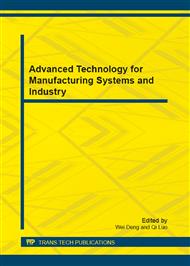p.321
p.326
p.334
p.338
p.344
p.350
p.356
p.360
p.366
A Performance Modeling Language for Automotive Embedded Control Systems Based on UML
Abstract:
To improve the timing related performance of the embedded software of automotive control system, a performance modeling language has been developed based on UML (Unified Modeling Language) using meta-modeling technique. The proposed language consists of three kinds of meta-models used to define the high-level modeling paradigms for software structure, target platform and runtime system respectively. The modeling environment configured by the proposed language and software modules of functional model importation, components allocation, task forming and timing analysis can reuse the existing functional models, add timing requirement as well as resource constraints, and fulfill formal timing analysis at an early design stage. As results, the reliability of the automotive embedded control software can be improved and the development cycle and cost can also be reduced.
Info:
Periodical:
Pages:
344-349
Citation:
Online since:
November 2012
Authors:
Keywords:
Price:
Сopyright:
© 2012 Trans Tech Publications Ltd. All Rights Reserved
Share:
Citation:


